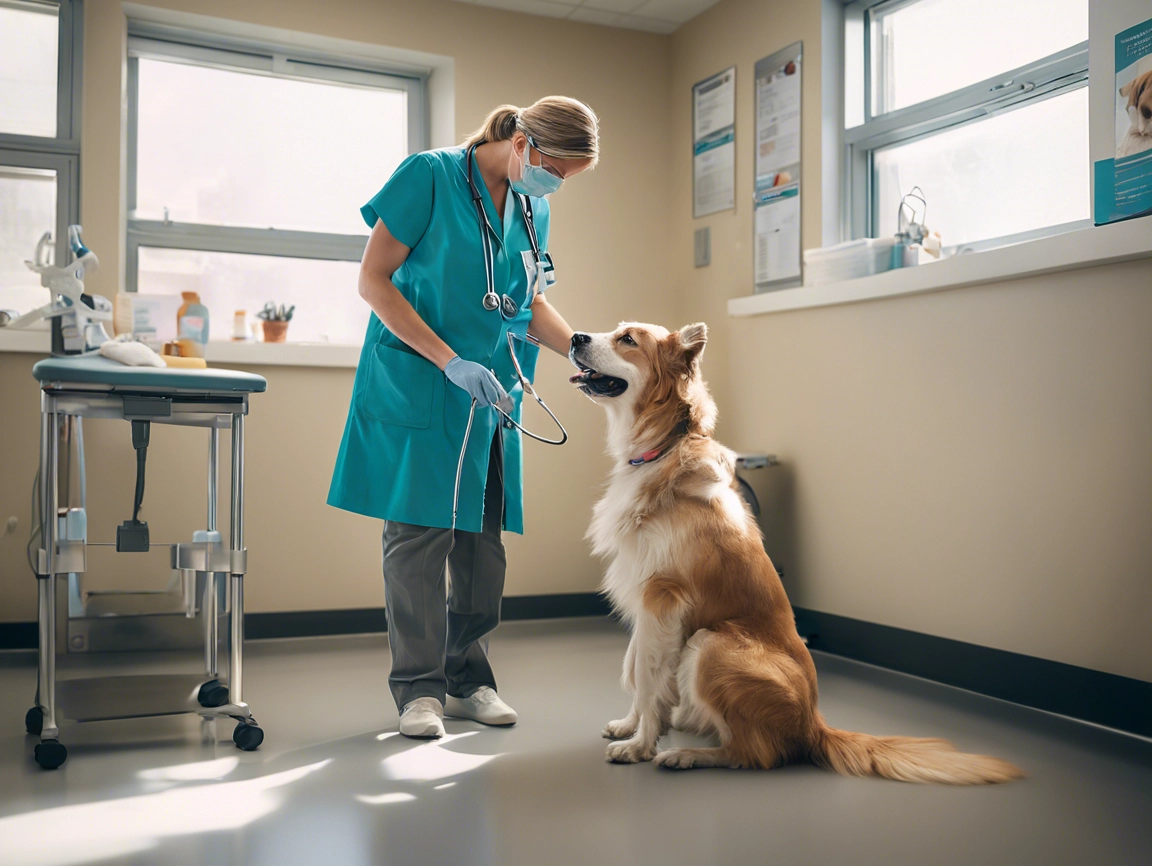What to Do in a Dog Emergency: Your Guide to Emergency Veterinary Care
Emergencies can strike at any time, and as a pet parent, knowing how to respond quickly and effectively is critical to your dog’s well-being. Whether it’s a sudden illness, injury, or other unexpected health issue, having a plan in place can save valuable time—and potentially your dog’s life. An emergency hospital for dogs and other pet emergencies is designed to provide immediate, life-saving care when every second counts. This guide will help you recognize the signs of a dog emergency, understand what steps to take, and prepare for a visit to an emergency vet.
Recognizing Signs of a Dog Emergency
Understanding the signs of a potential pet emergency is the first step in ensuring your dog receives timely care. Some symptoms may be obvious, while others are subtle but equally critical.
Common Symptoms to Watch For:
- Excessive Bleeding: Bleeding that doesn’t stop within a few minutes, particularly from large wounds, is a medical emergency.
- Difficulty Breathing: Labored breathing, wheezing, or choking are serious signs that your dog needs immediate attention.
- Severe Vomiting or Diarrhea: Frequent or bloody vomiting and diarrhea can lead to dehydration and indicate serious underlying issues.
- Seizures or Loss of Consciousness: A seizure or sudden collapse requires urgent veterinary care to identify the cause and prevent further episodes.
When to Seek Immediate Help
Some scenarios demand an immediate trip to the emergency hospital for dogs:
- Trauma from an accident or fall
- Ingestion of toxic substances, such as chocolate, medications, or household cleaners
- Sudden, extreme pain indicated by whining, shaking, or refusal to move
- Difficulty urinating or defecating, which could indicate a blockage
If you’re ever unsure whether your dog’s symptoms constitute an emergency, it’s better to err on the side of caution and contact your emergency vet services for guidance.
Immediate Actions to Take in an Emergency
When faced with a dog emergency, taking the right steps can make all the difference. Here’s how to act swiftly and effectively:
Stay Calm
Your dog can sense your emotions, and staying calm will help keep them as relaxed as possible. Panicking can make the situation worse and delay critical actions.
Assess the Situation
Take a moment to evaluate your dog’s condition. Look for visible injuries, check their breathing, and note any symptoms. This information will be crucial when speaking to a vet.
Contact Your Emergency Vet
Call your emergency hospital for dogs before arriving to inform them of the situation. Provide clear details about your dog’s condition, symptoms, and any known causes of the emergency. This allows the veterinary team to prepare for your arrival.
Transporting Your Dog Safely
Transporting an injured or distressed dog requires extra care:
- Use a sturdy carrier or crate for small dogs.
- For larger dogs, gently place them on a flat surface, such as a board or blanket, to prevent further injury.
- Minimize movement and keep them as comfortable as possible during transport.
What to Expect at an Emergency Hospital for Dogs
When you arrive at the emergency vet, knowing what to expect can help ease some of the stress.
Check-In Process
Upon arrival, you’ll typically complete a brief check-in process. This involves providing your contact information, a description of your dog’s symptoms, and any relevant medical history. If your dog’s condition is critical, the veterinary team will prioritize immediate stabilization.
Initial Assessment
The vet will perform a physical examination to evaluate your dog’s condition. This includes checking vital signs such as heart rate, temperature, and respiration.
Diagnostic Tests
Depending on the symptoms, your vet may recommend diagnostic tests to determine the underlying issue:
- Blood Tests: To assess organ function and detect infections or abnormalities.
- X-rays or Ultrasound: To identify fractures, blockages, or internal injuries.
- Urine Analysis: To check for urinary tract issues or dehydration.
These tests allow the veterinary team to develop a targeted treatment plan for your dog.
Aftercare and Follow-Up
Your dog’s recovery doesn’t end after the emergency visit. Proper aftercare and follow-up are essential to ensure a full recovery.
Post-Emergency Care
Follow all instructions provided by the vet, including medication schedules, dietary changes, and activity restrictions. Monitor your dog closely for any signs of discomfort or changes in behavior during the recovery period.
When to Schedule Follow-Ups
Depending on the nature of the emergency, your vet may recommend follow-up appointments to monitor your dog’s progress. If your dog’s condition worsens or new symptoms appear, contact your vet immediately.
Critical Signs and Situations Requiring Immediate Emergency Veterinary Care
Recognizing when your dog needs urgent medical attention is essential for their survival and well-being. As a responsible pet parent, knowing the signs of an emergency and acting swiftly can make a significant difference. Below, we highlight critical symptoms and situations that require immediate care at an emergency clinic or veterinary hospital.
Signs of an Emergency in Dogs
Dogs often display clear signals when they’re in distress. Here are some obvious signs to watch out for:
- Difficulty breathing: Labored or obstructed breathing can indicate serious underlying conditions such as airway blockages or respiratory infections.
- Severe bleeding: Persistent bleeding from any part of the body may indicate internal injuries or trauma requiring urgent care for pets.
- Spinal injury: If your dog is suddenly unable to walk, has a hunched back, or shows signs of paralysis, this could indicate a spinal injury that needs critical care.
- Broken bone: Visible deformities, inability to bear weight, or extreme pain may point to a broken bone caused by accidents or falls.
- Signs of pain: Behaviors such as excessive whining, limping, or restlessness often suggest your pet is in distress and requires immediate veterinary attention.
Common Causes of Veterinary Emergencies
Emergencies in dogs can arise from various situations, including:
- Accidents or Trauma: From car accidents to falls, traumatic injuries are a frequent cause for visits to emergency clinics.
- Allergic Reactions: Severe allergic responses to foods, insect bites, or medications may cause swelling, vomiting, and in extreme cases, difficulty breathing.
- Ingesting Toxic Substances: Household items like chocolate, medications, or cleaning chemicals can cause poisoning, requiring rapid medical care.
- Medical Care After Sudden Illness: Conditions such as seizures, unexplained vomiting, or fainting are all indicators that your dog needs immediate veterinary emergencies addressed.
How Emergency Clinics Provide Care
Emergency hospitals for dogs are equipped to handle a wide range of urgent situations, from critical care to minor injuries. Here’s what pet parents can expect when they arrive:
- Initial Assessment: The veterinary team will quickly evaluate your dog’s condition to prioritize treatment.
- Diagnostic Testing: Tools such as X-rays, ultrasounds, and blood tests help diagnose conditions like spinal injuries or internal bleeding.
- Stabilization and Treatment: Whether your dog requires oxygen therapy for breathing difficulties or surgery for broken bones, emergency veterinarians act swiftly to provide life-saving interventions.
Why Prompt Action Matters
Delaying medical attention during a veterinary emergency can worsen your dog’s condition and lead to more complex health issues. Trusted veterinary clinics, like Central Orange County Emergency Animal Hospital, offer 24/7 emergency services to ensure your pet receives the care they need when it matters most.
Be Prepared and Stay Proactive
Emergencies are never easy, but being prepared can make all the difference for your dog’s safety and well-being. Recognizing the signs of a dog emergency, acting quickly, and seeking professional help from an emergency hospital for dogs can save valuable time and improve outcomes.
For more information on how to stay prepared, check out our blog post on What to do if your Dog has a Medical Emergency. Additionally, having pet insurance can provide peace of mind during unexpected situations—learn more in our guide on The Benefits of Having Pet Insurance.
When emergencies strike, trust the expert care at Central Orange County Emergency Animal Hospital. Visit our Emergency Veterinary Services page for more details, or contact us directly for immediate assistance.
For additional information on recognizing and managing dog emergencies, visit the American Veterinary Medical Association (AVMA) guide on Pet First Aid.




 in California by
in California by